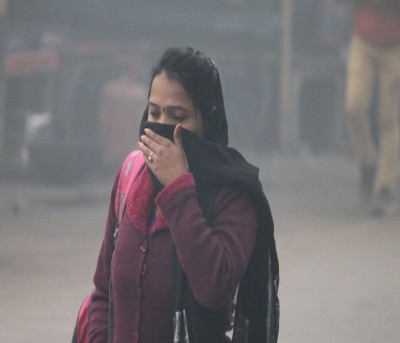
New Delhi, Delhi, between January 1 till May 31, reported the highest number of 'poor' air quality days since 2018 while 'very poor' days were the least for the same duration, data from Central Pollution Control Board (CPCB) showed.
The CPCB calculates the Air Quality Index (AQI) based on multiple inputs, including the PM2.5 and PM10 pollutants. An AQI between zero and 50 is considered 'good', 51 and 100 'satisfactory', 101 and 200 'moderate', 201 and 300 'poor', 301 and 400 'very poor'. AQI over 401 is considered 'severe'.
In 2022, for the duration from January 1 till May 31, there were as many as 63 per cent days with 'poor' AQI compared to 51 per cent in 2018, 39 per cent in 2019, 24 per cent in 2020, and 38 per cent in 2021.
There were 12 per cent of days with 'severe' AQI for the same duration, compared to 18 per cent in 2018, 17 per cent in 2019, 10 per cent in 2020, and 19 per cent in 2021, the CPCB data showed.
The year 2020 was an exception when there were 16 per cent of 'satisfactory' AQI days and 47 per cent 'moderate' AQI days, in contrast to other years where there were hardly any 'satisfactory' AQI days.
A meteorologist attributed the rise in lack of rain from February 25 till mid-May for the entire Delhi-NCR and northwest Indian plains. However, it is not just lack of rains but the local point sources of pollution too.
A study by Centre for Science and Environment (CSE) in 2020 on 'Assessment of industrial air pollution in Delhi NCR' had covered seven major industrial districts of Alwar, Bhiwadi, Ghaziabad, Gurugram, Faridabad, Panipat and Sonipat - all having an impact on Delhi's air quality - and estimated a coal usage of up to 1.4 million tonnes by industries in these regions.
Generally, stubble burning in winter by farmers in Punjab and Haryana has been blamed for bad air quality in Delhi NCR. However, studies have established that this is just one of the multiple causes contributing to the decreasing air quality. 'Point sources of emission', as they are called, for Delhi include transport, power plants around Delhi, local sources of burning, brick kilns around Delhi apart from the stubble burning.
Earlier in the day, another CSE analysis had said that the geographical spread of ground-level ozone pollution in Delhi-NCR during March-April was the highest in the past four years.


.jpeg)

